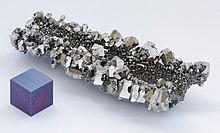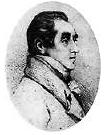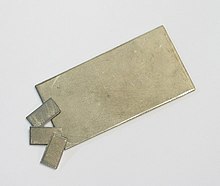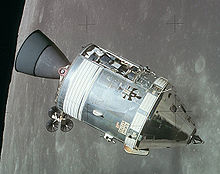Niobium
From Wikipedia, the free encyclopedia
 |
|||||||||||||||||||||||||||||||||||||||||||||||||||||||||||||||||||||||||||||||||||||||||||||||||||||||||||||||||||||||||||||||||||||||||||||||||||||||||||||||||||||||||||||||||||||||||||||||||||||||||||||||||||||||||||||||||||||
| General properties | |||||||||||||||||||||||||||||||||||||||||||||||||||||||||||||||||||||||||||||||||||||||||||||||||||||||||||||||||||||||||||||||||||||||||||||||||||||||||||||||||||||||||||||||||||||||||||||||||||||||||||||||||||||||||||||||||||||
|---|---|---|---|---|---|---|---|---|---|---|---|---|---|---|---|---|---|---|---|---|---|---|---|---|---|---|---|---|---|---|---|---|---|---|---|---|---|---|---|---|---|---|---|---|---|---|---|---|---|---|---|---|---|---|---|---|---|---|---|---|---|---|---|---|---|---|---|---|---|---|---|---|---|---|---|---|---|---|---|---|---|---|---|---|---|---|---|---|---|---|---|---|---|---|---|---|---|---|---|---|---|---|---|---|---|---|---|---|---|---|---|---|---|---|---|---|---|---|---|---|---|---|---|---|---|---|---|---|---|---|---|---|---|---|---|---|---|---|---|---|---|---|---|---|---|---|---|---|---|---|---|---|---|---|---|---|---|---|---|---|---|---|---|---|---|---|---|---|---|---|---|---|---|---|---|---|---|---|---|---|---|---|---|---|---|---|---|---|---|---|---|---|---|---|---|---|---|---|---|---|---|---|---|---|---|---|---|---|---|---|---|---|---|---|---|---|---|---|---|---|---|---|---|---|---|---|---|---|---|
| Name, symbol | niobium, Nb | ||||||||||||||||||||||||||||||||||||||||||||||||||||||||||||||||||||||||||||||||||||||||||||||||||||||||||||||||||||||||||||||||||||||||||||||||||||||||||||||||||||||||||||||||||||||||||||||||||||||||||||||||||||||||||||||||||||
| Appearance | gray metallic, bluish when oxidized | ||||||||||||||||||||||||||||||||||||||||||||||||||||||||||||||||||||||||||||||||||||||||||||||||||||||||||||||||||||||||||||||||||||||||||||||||||||||||||||||||||||||||||||||||||||||||||||||||||||||||||||||||||||||||||||||||||||
| Pronunciation | /naɪˈoʊbiəm/ ny-OH-bee-əm |
||||||||||||||||||||||||||||||||||||||||||||||||||||||||||||||||||||||||||||||||||||||||||||||||||||||||||||||||||||||||||||||||||||||||||||||||||||||||||||||||||||||||||||||||||||||||||||||||||||||||||||||||||||||||||||||||||||
| Niobium in the periodic table | |||||||||||||||||||||||||||||||||||||||||||||||||||||||||||||||||||||||||||||||||||||||||||||||||||||||||||||||||||||||||||||||||||||||||||||||||||||||||||||||||||||||||||||||||||||||||||||||||||||||||||||||||||||||||||||||||||||
|
|||||||||||||||||||||||||||||||||||||||||||||||||||||||||||||||||||||||||||||||||||||||||||||||||||||||||||||||||||||||||||||||||||||||||||||||||||||||||||||||||||||||||||||||||||||||||||||||||||||||||||||||||||||||||||||||||||||
| Atomic number (Z) | 41 | ||||||||||||||||||||||||||||||||||||||||||||||||||||||||||||||||||||||||||||||||||||||||||||||||||||||||||||||||||||||||||||||||||||||||||||||||||||||||||||||||||||||||||||||||||||||||||||||||||||||||||||||||||||||||||||||||||||
| Group, block | group 5, d-block | ||||||||||||||||||||||||||||||||||||||||||||||||||||||||||||||||||||||||||||||||||||||||||||||||||||||||||||||||||||||||||||||||||||||||||||||||||||||||||||||||||||||||||||||||||||||||||||||||||||||||||||||||||||||||||||||||||||
| Period | period 5 | ||||||||||||||||||||||||||||||||||||||||||||||||||||||||||||||||||||||||||||||||||||||||||||||||||||||||||||||||||||||||||||||||||||||||||||||||||||||||||||||||||||||||||||||||||||||||||||||||||||||||||||||||||||||||||||||||||||
| Element category | transition metal | ||||||||||||||||||||||||||||||||||||||||||||||||||||||||||||||||||||||||||||||||||||||||||||||||||||||||||||||||||||||||||||||||||||||||||||||||||||||||||||||||||||||||||||||||||||||||||||||||||||||||||||||||||||||||||||||||||||
| Standard atomic weight (±) (Ar) | 92.90637(2)[1] | ||||||||||||||||||||||||||||||||||||||||||||||||||||||||||||||||||||||||||||||||||||||||||||||||||||||||||||||||||||||||||||||||||||||||||||||||||||||||||||||||||||||||||||||||||||||||||||||||||||||||||||||||||||||||||||||||||||
| Electron configuration | [Kr] 4d4 5s1 | ||||||||||||||||||||||||||||||||||||||||||||||||||||||||||||||||||||||||||||||||||||||||||||||||||||||||||||||||||||||||||||||||||||||||||||||||||||||||||||||||||||||||||||||||||||||||||||||||||||||||||||||||||||||||||||||||||||
|
per shell
|
2, 8, 18, 12, 1 | ||||||||||||||||||||||||||||||||||||||||||||||||||||||||||||||||||||||||||||||||||||||||||||||||||||||||||||||||||||||||||||||||||||||||||||||||||||||||||||||||||||||||||||||||||||||||||||||||||||||||||||||||||||||||||||||||||||
| Physical properties | |||||||||||||||||||||||||||||||||||||||||||||||||||||||||||||||||||||||||||||||||||||||||||||||||||||||||||||||||||||||||||||||||||||||||||||||||||||||||||||||||||||||||||||||||||||||||||||||||||||||||||||||||||||||||||||||||||||
| Phase | solid | ||||||||||||||||||||||||||||||||||||||||||||||||||||||||||||||||||||||||||||||||||||||||||||||||||||||||||||||||||||||||||||||||||||||||||||||||||||||||||||||||||||||||||||||||||||||||||||||||||||||||||||||||||||||||||||||||||||
| Melting point | 2750 K (2477 °C, 4491 °F) | ||||||||||||||||||||||||||||||||||||||||||||||||||||||||||||||||||||||||||||||||||||||||||||||||||||||||||||||||||||||||||||||||||||||||||||||||||||||||||||||||||||||||||||||||||||||||||||||||||||||||||||||||||||||||||||||||||||
| Boiling point | 5017 K (4744 °C, 8571 °F) | ||||||||||||||||||||||||||||||||||||||||||||||||||||||||||||||||||||||||||||||||||||||||||||||||||||||||||||||||||||||||||||||||||||||||||||||||||||||||||||||||||||||||||||||||||||||||||||||||||||||||||||||||||||||||||||||||||||
| Density near r.t. | 8.57 g/cm3 | ||||||||||||||||||||||||||||||||||||||||||||||||||||||||||||||||||||||||||||||||||||||||||||||||||||||||||||||||||||||||||||||||||||||||||||||||||||||||||||||||||||||||||||||||||||||||||||||||||||||||||||||||||||||||||||||||||||
| Heat of fusion | 30 kJ/mol | ||||||||||||||||||||||||||||||||||||||||||||||||||||||||||||||||||||||||||||||||||||||||||||||||||||||||||||||||||||||||||||||||||||||||||||||||||||||||||||||||||||||||||||||||||||||||||||||||||||||||||||||||||||||||||||||||||||
| Heat of vaporization | 689.9 kJ/mol | ||||||||||||||||||||||||||||||||||||||||||||||||||||||||||||||||||||||||||||||||||||||||||||||||||||||||||||||||||||||||||||||||||||||||||||||||||||||||||||||||||||||||||||||||||||||||||||||||||||||||||||||||||||||||||||||||||||
| Molar heat capacity | 24.60 J/(mol·K) | ||||||||||||||||||||||||||||||||||||||||||||||||||||||||||||||||||||||||||||||||||||||||||||||||||||||||||||||||||||||||||||||||||||||||||||||||||||||||||||||||||||||||||||||||||||||||||||||||||||||||||||||||||||||||||||||||||||
vapor pressure
|
|||||||||||||||||||||||||||||||||||||||||||||||||||||||||||||||||||||||||||||||||||||||||||||||||||||||||||||||||||||||||||||||||||||||||||||||||||||||||||||||||||||||||||||||||||||||||||||||||||||||||||||||||||||||||||||||||||||
| Atomic properties | |||||||||||||||||||||||||||||||||||||||||||||||||||||||||||||||||||||||||||||||||||||||||||||||||||||||||||||||||||||||||||||||||||||||||||||||||||||||||||||||||||||||||||||||||||||||||||||||||||||||||||||||||||||||||||||||||||||
| Oxidation states | 5, 4, 3, 2, 1, −1, −3 (a mildly acidic oxide) | ||||||||||||||||||||||||||||||||||||||||||||||||||||||||||||||||||||||||||||||||||||||||||||||||||||||||||||||||||||||||||||||||||||||||||||||||||||||||||||||||||||||||||||||||||||||||||||||||||||||||||||||||||||||||||||||||||||
| Electronegativity | Pauling scale: 1.6 | ||||||||||||||||||||||||||||||||||||||||||||||||||||||||||||||||||||||||||||||||||||||||||||||||||||||||||||||||||||||||||||||||||||||||||||||||||||||||||||||||||||||||||||||||||||||||||||||||||||||||||||||||||||||||||||||||||||
| Ionization energies | 1st: 652.1 kJ/mol 2nd: 1380 kJ/mol 3rd: 2416 kJ/mol |
||||||||||||||||||||||||||||||||||||||||||||||||||||||||||||||||||||||||||||||||||||||||||||||||||||||||||||||||||||||||||||||||||||||||||||||||||||||||||||||||||||||||||||||||||||||||||||||||||||||||||||||||||||||||||||||||||||
| Atomic radius | empirical: 146 pm | ||||||||||||||||||||||||||||||||||||||||||||||||||||||||||||||||||||||||||||||||||||||||||||||||||||||||||||||||||||||||||||||||||||||||||||||||||||||||||||||||||||||||||||||||||||||||||||||||||||||||||||||||||||||||||||||||||||
| Covalent radius | 164±6 pm | ||||||||||||||||||||||||||||||||||||||||||||||||||||||||||||||||||||||||||||||||||||||||||||||||||||||||||||||||||||||||||||||||||||||||||||||||||||||||||||||||||||||||||||||||||||||||||||||||||||||||||||||||||||||||||||||||||||
| Miscellanea | |||||||||||||||||||||||||||||||||||||||||||||||||||||||||||||||||||||||||||||||||||||||||||||||||||||||||||||||||||||||||||||||||||||||||||||||||||||||||||||||||||||||||||||||||||||||||||||||||||||||||||||||||||||||||||||||||||||
| Crystal structure | body-centered cubic (bcc) | ||||||||||||||||||||||||||||||||||||||||||||||||||||||||||||||||||||||||||||||||||||||||||||||||||||||||||||||||||||||||||||||||||||||||||||||||||||||||||||||||||||||||||||||||||||||||||||||||||||||||||||||||||||||||||||||||||||
| Speed of sound thin rod | 3480 m/s (at 20 °C) | ||||||||||||||||||||||||||||||||||||||||||||||||||||||||||||||||||||||||||||||||||||||||||||||||||||||||||||||||||||||||||||||||||||||||||||||||||||||||||||||||||||||||||||||||||||||||||||||||||||||||||||||||||||||||||||||||||||
| Thermal expansion | 7.3 µm/(m·K) | ||||||||||||||||||||||||||||||||||||||||||||||||||||||||||||||||||||||||||||||||||||||||||||||||||||||||||||||||||||||||||||||||||||||||||||||||||||||||||||||||||||||||||||||||||||||||||||||||||||||||||||||||||||||||||||||||||||
| Thermal conductivity | 53.7 W/(m·K) | ||||||||||||||||||||||||||||||||||||||||||||||||||||||||||||||||||||||||||||||||||||||||||||||||||||||||||||||||||||||||||||||||||||||||||||||||||||||||||||||||||||||||||||||||||||||||||||||||||||||||||||||||||||||||||||||||||||
| Electrical resistivity | 152 nΩ·m (at 0 °C) | ||||||||||||||||||||||||||||||||||||||||||||||||||||||||||||||||||||||||||||||||||||||||||||||||||||||||||||||||||||||||||||||||||||||||||||||||||||||||||||||||||||||||||||||||||||||||||||||||||||||||||||||||||||||||||||||||||||
| Magnetic ordering | paramagnetic | ||||||||||||||||||||||||||||||||||||||||||||||||||||||||||||||||||||||||||||||||||||||||||||||||||||||||||||||||||||||||||||||||||||||||||||||||||||||||||||||||||||||||||||||||||||||||||||||||||||||||||||||||||||||||||||||||||||
| Young's modulus | 105 GPa | ||||||||||||||||||||||||||||||||||||||||||||||||||||||||||||||||||||||||||||||||||||||||||||||||||||||||||||||||||||||||||||||||||||||||||||||||||||||||||||||||||||||||||||||||||||||||||||||||||||||||||||||||||||||||||||||||||||
| Shear modulus | 38 GPa | ||||||||||||||||||||||||||||||||||||||||||||||||||||||||||||||||||||||||||||||||||||||||||||||||||||||||||||||||||||||||||||||||||||||||||||||||||||||||||||||||||||||||||||||||||||||||||||||||||||||||||||||||||||||||||||||||||||
| Bulk modulus | 170 GPa | ||||||||||||||||||||||||||||||||||||||||||||||||||||||||||||||||||||||||||||||||||||||||||||||||||||||||||||||||||||||||||||||||||||||||||||||||||||||||||||||||||||||||||||||||||||||||||||||||||||||||||||||||||||||||||||||||||||
| Poisson ratio | 0.40 | ||||||||||||||||||||||||||||||||||||||||||||||||||||||||||||||||||||||||||||||||||||||||||||||||||||||||||||||||||||||||||||||||||||||||||||||||||||||||||||||||||||||||||||||||||||||||||||||||||||||||||||||||||||||||||||||||||||
| Mohs hardness | 6.0 | ||||||||||||||||||||||||||||||||||||||||||||||||||||||||||||||||||||||||||||||||||||||||||||||||||||||||||||||||||||||||||||||||||||||||||||||||||||||||||||||||||||||||||||||||||||||||||||||||||||||||||||||||||||||||||||||||||||
| Vickers hardness | 870–1320 MPa | ||||||||||||||||||||||||||||||||||||||||||||||||||||||||||||||||||||||||||||||||||||||||||||||||||||||||||||||||||||||||||||||||||||||||||||||||||||||||||||||||||||||||||||||||||||||||||||||||||||||||||||||||||||||||||||||||||||
| Brinell hardness | 735–2450 MPa | ||||||||||||||||||||||||||||||||||||||||||||||||||||||||||||||||||||||||||||||||||||||||||||||||||||||||||||||||||||||||||||||||||||||||||||||||||||||||||||||||||||||||||||||||||||||||||||||||||||||||||||||||||||||||||||||||||||
| CAS Number | 7440-03-1 | ||||||||||||||||||||||||||||||||||||||||||||||||||||||||||||||||||||||||||||||||||||||||||||||||||||||||||||||||||||||||||||||||||||||||||||||||||||||||||||||||||||||||||||||||||||||||||||||||||||||||||||||||||||||||||||||||||||
| History | |||||||||||||||||||||||||||||||||||||||||||||||||||||||||||||||||||||||||||||||||||||||||||||||||||||||||||||||||||||||||||||||||||||||||||||||||||||||||||||||||||||||||||||||||||||||||||||||||||||||||||||||||||||||||||||||||||||
| Naming | after Niobe in Greek mythology, daughter of Tantalus (tantalum) | ||||||||||||||||||||||||||||||||||||||||||||||||||||||||||||||||||||||||||||||||||||||||||||||||||||||||||||||||||||||||||||||||||||||||||||||||||||||||||||||||||||||||||||||||||||||||||||||||||||||||||||||||||||||||||||||||||||
| Discovery | Charles Hatchett (1801) | ||||||||||||||||||||||||||||||||||||||||||||||||||||||||||||||||||||||||||||||||||||||||||||||||||||||||||||||||||||||||||||||||||||||||||||||||||||||||||||||||||||||||||||||||||||||||||||||||||||||||||||||||||||||||||||||||||||
| First isolation | Christian Wilhelm Blomstrand (1864) | ||||||||||||||||||||||||||||||||||||||||||||||||||||||||||||||||||||||||||||||||||||||||||||||||||||||||||||||||||||||||||||||||||||||||||||||||||||||||||||||||||||||||||||||||||||||||||||||||||||||||||||||||||||||||||||||||||||
| Recognized as a distinct element by | Heinrich Rose (1844) | ||||||||||||||||||||||||||||||||||||||||||||||||||||||||||||||||||||||||||||||||||||||||||||||||||||||||||||||||||||||||||||||||||||||||||||||||||||||||||||||||||||||||||||||||||||||||||||||||||||||||||||||||||||||||||||||||||||
| Most stable isotopes of niobium | |||||||||||||||||||||||||||||||||||||||||||||||||||||||||||||||||||||||||||||||||||||||||||||||||||||||||||||||||||||||||||||||||||||||||||||||||||||||||||||||||||||||||||||||||||||||||||||||||||||||||||||||||||||||||||||||||||||
|
|||||||||||||||||||||||||||||||||||||||||||||||||||||||||||||||||||||||||||||||||||||||||||||||||||||||||||||||||||||||||||||||||||||||||||||||||||||||||||||||||||||||||||||||||||||||||||||||||||||||||||||||||||||||||||||||||||||
| Decay modes in parentheses are predicted, but have not yet been observed | |||||||||||||||||||||||||||||||||||||||||||||||||||||||||||||||||||||||||||||||||||||||||||||||||||||||||||||||||||||||||||||||||||||||||||||||||||||||||||||||||||||||||||||||||||||||||||||||||||||||||||||||||||||||||||||||||||||
Niobium has physical and chemical properties similar to those of the element tantalum, and the two are therefore difficult to distinguish. The English chemist Charles Hatchett reported a new element similar to tantalum in 1801 and named it columbium. In 1809, the English chemist William Hyde Wollaston wrongly concluded that tantalum and columbium were identical. The German chemist Heinrich Rose determined in 1846 that tantalum ores contain a second element, which he named niobium. In 1864 and 1865, a series of scientific findings clarified that niobium and columbium were the same element (as distinguished from tantalum), and for a century both names were used interchangeably. Niobium was officially adopted as the name of the element in 1949, but the name columbium remains in current use in metallurgy in the United States.
It was not until the early 20th century that niobium was first used commercially. Brazil is the leading producer of niobium and ferroniobium, an alloy of niobium and iron. Niobium is used mostly in alloys, the largest part in special steel such as that used in gas pipelines. Although these alloys contain a maximum of 0.1%, the small percentage of niobium enhances the strength of the steel. The temperature stability of niobium-containing superalloys is important for its use in jet and rocket engines. Niobium is used in various superconducting materials. These superconducting alloys, also containing titanium and tin, are widely used in the superconducting magnets of MRI scanners. Other applications of niobium include its use in welding, nuclear industries, electronics, optics, numismatics, and jewelry. In the last two applications, niobium's low toxicity and ability to be colored by anodization are particular advantages.
History
Charles Hatchett was the discoverer of columbium.
Picture of a Hellenistic sculpture representing Niobe by Giorgio Sommer
Subsequently, there was considerable confusion[7] over the difference between columbium (niobium) and the closely related tantalum. In 1809, the English chemist William Hyde Wollaston compared the oxides derived from both columbium—columbite, with a density 5.918 g/cm3, and tantalum—tantalite, with a density over 8 g/cm3, and concluded that the two oxides, despite the significant difference in density, were identical; thus he kept the name tantalum.[7] This conclusion was disputed in 1846 by the German chemist Heinrich Rose, who argued that there were two different elements in the tantalite sample, and named them after children of Tantalus: niobium (from Niobe), and pelopium (from Pelops).[8][9] This confusion arose from the minimal observed differences between tantalum and niobium. The claimed new elements pelopium, ilmenium and dianium[10] were in fact identical to niobium or mixtures of niobium and tantalum.[11]
The differences between tantalum and niobium were unequivocally demonstrated in 1864 by Christian Wilhelm Blomstrand,[11] and Henri Etienne Sainte-Claire Deville, as well as Louis J. Troost, who determined the formulas of some of the compounds in 1865[11][12] and finally by the Swiss chemist Jean Charles Galissard de Marignac[13] in 1866, who all proved that there were only two elements. Articles on ilmenium continued to appear until 1871.[14]
De Marignac was the first to prepare the metal in 1864, when he reduced niobium chloride by heating it in an atmosphere of hydrogen.[15] Although de Marignac was able to produce tantalum-free niobium on a larger scale by 1866, it was not until the early 20th century that niobium was first used commercially, in incandescent lamp filaments.[12] This use quickly became obsolete through the replacement of niobium with tungsten, which has a higher melting point and thus is preferable for use in incandescent lamps. The discovery that niobium improves the strength of steel was made in the 1920s, and this application remains its predominant use.[12] In 1961 the American physicist Eugene Kunzler and coworkers at Bell Labs discovered that niobium-tin continues to exhibit superconductivity in the presence of strong electric currents and magnetic fields,[16] making it the first material to support the high currents and fields necessary for useful high-power magnets and electrically powered machinery. This discovery would allow — two decades later — the production of long multi-strand cables that could be wound into coils to create large, powerful electromagnets for rotating machinery, particle accelerators, or particle detectors.[17][18]
Naming of the element
Columbium (symbol "Cb")[19] was the name originally given to this element by Hatchett, and this name remained in use in American journals—the last paper published by American Chemical Society with columbium in its title dates from 1953[20]—while niobium was used in Europe. To end this confusion, the name niobium was chosen for element 41 at the 15th Conference of the Union of Chemistry in Amsterdam in 1949.[21] A year later this name was officially adopted by the International Union of Pure and Applied Chemistry (IUPAC) after 100 years of controversy, despite the chronological precedence of the name Columbium.[21] The latter name is still sometimes used in US industry.[22] This was a compromise of sorts;[21] the IUPAC accepted tungsten instead of wolfram, in deference to North American usage; and niobium instead of columbium, in deference to European usage. Not everyone agreed, and while many leading chemical societies and government organizations refer to it by the official IUPAC name, many leading metallurgists, metal societies, and the United States Geological Survey still refer to the metal by the original "columbium".[23][24]Characteristics
Physical
Niobium is a lustrous, grey, ductile, paramagnetic metal in group 5 of the periodic table (see table), although it has an atypical configuration in its outermost electron shells compared to the rest of the members. (This can be observed in the neighborhood of ruthenium (44), rhodium (45), and palladium (46).)| Z | Element | No. of electrons/shell |
|---|---|---|
| 23 | vanadium | 2, 8, 11, 2 |
| 41 | niobium | 2, 8, 18, 12, 1 |
| 73 | tantalum | 2, 8, 18, 32, 11, 2 |
| 105 | dubnium | 2, 8, 18, 32, 32, 11, 2 (predicted) |
Niobium becomes a superconductor at cryogenic temperatures. At atmospheric pressure, it has the highest critical temperature of the elemental superconductors: 9.2 K.[26] Niobium has the largest magnetic penetration depth of any element.[26] In addition, it is one of the three elemental Type II superconductors, along with vanadium and technetium. The superconductive properties are strongly dependent on the purity of the niobium metal.[27] When very pure, it is comparatively soft and ductile, but impurities make it harder.[28]
The metal has a low capture cross-section for thermal neutrons;[29] thus it is used in the nuclear industries.[30]
Chemical
The metal takes on a bluish tinge when exposed to air at room temperature for extended periods.[31] Despite presenting a high melting point in elemental form (2,468 °C), it has a low density in comparison to other refractory metals. Furthermore, it is corrosion-resistant, exhibits superconductivity properties, and forms dielectric oxide layers.Niobium is slightly less electropositive and more compact than its predecessor in the periodic table, zirconium, whereas it is virtually identical in size to the heavier tantalum atoms, owing to the lanthanide contraction.[28] As a result, niobium's chemical properties are very similar to those for tantalum, which appears directly below niobium in the periodic table.[12] Although its corrosion resistance is not as outstanding as that of tantalum, its lower price and greater availability make niobium attractive for less demanding uses such as linings in chemical plants.[28]
Isotopes
Main article: Isotopes of niobium
Naturally occurring niobium is composed of one stable isotope, 93Nb.[32] By 2003, at least 32 radioisotopes had been synthesized, ranging in atomic mass from 81 to 113. The most stable of these is 92Nb with a half-life of 34.7 million years. One of the least stable is 113Nb, with an estimated half-life of 30 milliseconds. Isotopes that are lighter than the stable 93Nb tend to decay by β+ decay, and those that are heavier tend to decay by β− decay, with some exceptions. 81Nb, 82Nb, and 84Nb have minor β+ delayed proton emission decay paths, 91Nb decays by electron capture and positron emission, and 92Nb decays by both β+ and β− decay.[32]At least 25 nuclear isomers have been described, ranging in atomic mass from 84 to 104. Within this range, only 96Nb, 101Nb, and 103Nb do not have isomers. The most stable of niobium's isomers is 93mNb with a half-life of 16.13 years. The least stable isomer is 84mNb with a half-life of 103 ns. All of niobium's isomers decay by isomeric transition or beta decay except 92m1Nb, which has a minor electron capture decay chain.[32]
Occurrence
See also: Category:Niobium minerals
Niobium is estimated to be the 34th most common element in the Earth’s crust, with 20 ppm.[33]
Some think that the abundance on Earth is much greater, but that the
"missing" niobium may be located in the Earth’s core due to the metal's
high density.[23] The free element is not found in nature, but niobium occurs in combination with other elements in minerals.[28] Minerals that contain niobium often also contain tantalum. Examples include columbite ((Fe,Mn)(Nb,Ta)2O6) and columbite–tantalite (or coltan, (Fe,Mn)(Ta,Nb)2O6).[34] Columbite–tantalite minerals are most usually found as accessory minerals in pegmatite intrusions, and in alkaline intrusive rocks. Less common are the niobates of calcium, uranium, thorium and the rare earth elements. Examples of such niobates are pyrochlore ((Na,Ca)2Nb2O6(OH,F)) and euxenite ((Y,Ca,Ce,U,Th)(Nb,Ta,Ti)2O6). These large deposits of niobium have been found associated with carbonatites (carbonate-silicate igneous rocks) and as a constituent of pyrochlore.[35]The two largest deposits of pyrochlore were found in the 1950s in Brazil and Canada, and both countries are still the major producers of niobium mineral concentrates.[12] The largest deposit is hosted within a carbonatite intrusion at Araxá, Minas Gerais Brazil, owned by CBMM (Companhia Brasileira de Metalurgia e Mineração); the other deposit is located in Goiás and owned by Anglo American plc (through its subsidiary Mineração Catalão), also hosted within a carbonatite intrusion.[36] Altogether these two Brazilian mines produce around 75% of world supply. The third largest producer of niobium is the carbonatite-hosted Niobec Mine, Saint-Honoré near Chicoutimi, Quebec owned by Iamgold Corporation Ltd, which produces around 7% of world supply.[36]
Production
Niobium producers in 2006
- Ta2O5 + 14 HF → 2 H2[TaF7] + 5 H2O
- Nb2O5 + 10 HF → 2 H2[NbOF5] + 3 H2O
- H2[NbOF5] + 2 KF → K2[NbOF5]↓ + 2 HF
- 2 H2[NbOF5] + 10 NH4OH → Nb2O5↓ + 10 NH4F + 7 H2O
- 3 Nb2O5 + Fe2O3 + 12 Al → 6 Nb + 2 Fe + 6 Al2O3
As of 2013, the Brazilian company Cia. Brasileira de Metalurgia & Mineracao "controls 85 percent of the world's niobium production".[42] The United States Geological Survey estimates that the production increased from 38,700 tonnes in 2005 to 44,500 tonnes in 2006.[43][44] The worldwide resources are estimated to be 4,400,000 tonnes.[44] During the ten-year period between 1995 and 2005, the production more than doubled, starting from 17,800 tonnes in 1995.[45] Since 2009 production is stable at around 63,000 tonnes per year.[46]
| Country | 2000 | 2001 | 2002 | 2003 | 2004 | 2005 | 2006 | 2007 | 2008 | 2009 | 2010 | 2011 |
|---|---|---|---|---|---|---|---|---|---|---|---|---|
| 160 | 230 | 290 | 230 | 200 | 200 | 200 | ? | ? | ? | ? | ? | |
| 30,000 | 22,000 | 26,000 | 29,000 | 29,900 | 35,000 | 40,000 | 57,300 | 58,000 | 58,000 | 58,000 | 58,000 | |
| 2,290 | 3,200 | 3,410 | 3,280 | 3,400 | 3,310 | 4,167 | 3,020 | 4,380 | 4,330 | 4,420 | 4,400 | |
| ? | 50 | 50 | 13 | 52 | 25 | ? | ? | ? | ? | ? | ? | |
| ? | ? | 5 | 34 | 130 | 34 | 29 | ? | ? | ? | ? | ? | |
| 35 | 30 | 30 | 190 | 170 | 40 | 35 | ? | ? | ? | ? | ? | |
| 28 | 120 | 76 | 22 | 63 | 63 | 80 | ? | ? | ? | ? | ? | |
| World | 32,600 | 25,600 | 29,900 | 32,800 | 34,000 | 38,700 | 44,500 | 60,400 | 62,900 | 62,900 | 62,900 | 63,000 |
Compounds
See also: Category:Niobium compounds
Niobium is in many ways similar to tantalum and zirconium. It reacts with most nonmetals at high temperatures: niobium reacts with fluorine at room temperature, with chlorine and hydrogen at 200 °C, and with nitrogen at 400 °C, giving products that are frequently interstitial and nonstoichiometric.[28] The metal begins to oxidize in air at 200 °C,[37] and is resistant to corrosion by fused alkalis and by acids, including aqua regia, hydrochloric, sulfuric, nitric and phosphoric acids.[28] Niobium is attacked by hydrofluoric acid and hydrofluoric/nitric acid mixtures.Although niobium exhibits all of the formal oxidation states from +5 to −1, in most commonly encountered compounds, it is found in the +5 state.[28] Characteristically, compounds in oxidation states less than 5+ display Nb–Nb bonding.
Oxides and sulfides
Niobium forms oxides with the oxidation states +5 (Nb2O5), +4 (NbO2), and +3 (Nb2O3),[37] as well as with the rarer oxidation state +2 (NbO).[48] Most commonly encountered is the pentoxide, precursor to almost all niobium compounds and alloys.[37][49] Niobates are generated by dissolving the pentoxide in basic hydroxide solutions or by melting it in alkali metal oxides. Examples are lithium niobate (LiNbO3) and lanthanum niobate (LaNbO4). In the lithium niobate is a trigonally distorted perovskite-like structure, whereas the lanthanum niobate contains lone NbO3−4 ions.[37] The layered niobium sulfide (NbS2) is also known.[28]
Materials with a thin film coating of niobium(V) oxide can be produced by chemical vapor deposition or atomic layer deposition processes, in each case by the thermal decomposition of niobium(V) ethoxide above 350 °C.[50][51]
Halides
A sample of niobium pentachloride (yellow portion) that has partially hydrolyzed (white material).
Ball-and-stick model of niobium pentachloride, which exists as a dimer
5) feature octahedral Nb centres. Niobium pentafluoride (NbF5) is a white solid with a melting point of 79.0 °C and niobium pentachloride (NbCl5) is yellow (see image at left) with a melting point of 203.4 °C. Both are hydrolyzed to give oxides and oxyhalides, such as NbOCl3. The pentachloride is a versatile reagent being used to generate the organometallic compounds, such as niobocene dichloride ((C
5H
5)
2NbCl
2).[52] The tetrahalides (NbX
4) are dark-coloured polymers with Nb-Nb bonds, for example the black hygroscopic niobium tetrafluoride (NbF4) and brown niobium tetrachloride (NbCl4).
Anionic halide compounds of niobium are well known, owing in part to the Lewis acidity of the pentahalides. The most important is [NbF7]2−, which is an intermediate in the separation of Nb and Ta from the ores.[34] This heptafluoride tends to form the oxopentafluoride more readily than does the tantalum compound.Other halide complexes include octahedral [NbCl6]−:
- Nb2Cl10 + 2 Cl− → 2 [NbCl6]−
Nitrides and carbides
Other binary compounds of niobium include the niobium nitride (NbN), which becomes a superconductor at low temperatures and is used in detectors for infrared light.[54] The main niobium carbide is NbC, an extremely hard, refractory, ceramic material, commercially used in tool bits for cutting tools.Applications
A niobium foil
Steel production
Niobium is an effective microalloying element for steel. Adding niobium to the steel causes the formation of niobium carbide and niobium nitride within the structure of the steel.[23] These compounds improve the grain refining, retardation of recrystallization, and precipitation hardening of the steel. These effects in turn increase the toughness, strength, formability, and weldability of the microalloyed steel.[23] Microalloyed stainless steels have a niobium content of less than 0.1%.[56] It is an important alloy addition to high strength low alloy steels which are widely used as structural components in modern automobiles.[23] These niobium-containing alloys are strong and are often used in pipeline construction.[57][58]Superalloys
Apollo 15 CSM in lunar orbit with the dark rocket nozzle made from niobium-titanium alloy
An alloy used for liquid rocket thruster nozzles, such as in the main engine of the Apollo Lunar Modules, is the niobium alloy C-103, which consists of 89% niobium, 10% hafnium and 1% titanium.[62] Another niobium alloy was used for the nozzle of the Apollo Service Module. As niobium is oxidized at temperatures above 400 °C, a protective coating is necessary for these applications to prevent the alloy from becoming brittle.[62]
Niobium-base alloys
C-103 alloy was developed in the early 1960s jointly by the Wah Chang Corporation and Boeing Co. DuPont, Union Carbide Corp., General Electric Co. and several other companies were developing Nb-base alloys simultaneously, largely driven by the Cold War and Space Race. The sensitivity of Nb to oxygen requires processing in vacuum or inert atmosphere, which significantly increases the cost and difficulty of production. Vacuum arc remelting (VAR) and electron beam melting (EBM), novel processes at the time, enabled the development of reactive metals such as Nb. The project that yielded C-103 began in 1959 with as many as 256 experimental Nb alloys in the "C-series" (possibly from columbium) that could be melted as buttons and rolled into sheet. Wah Chang had an inventory of Hf, refined from nuclear-grade Zr, that it wanted to put to commercial use. The 103rd experimental composition of the C-series alloys, Nb-10Hf-1Ti, had the best combination of formability and high-temperature properties. Wah Chang fabricated the first 500-lb heat of C-103 in 1961, ingot to sheet, using EBM and VAR. The intended applications included turbine engine components and liquid metal heat exchangers. Competing Nb alloys from that era included FS85 (Nb-10W-28Ta-1Zr) from Fansteel Metallurgical Corp., Cb129Y (Nb-10W-10Hf-0.2Y) from Wah Chang and Boeing, Cb752 (Nb-10W-2.5Zr) from Union Carbide, and Nb1Zr from Superior Tube Co.[62]Superconducting magnets
A 3 tesla clinical magnetic resonance imaging scanner using niobium-superconducting alloy
3Ge), niobium-tin (Nb
3Sn), as well as the niobium-titanium alloys are used as a type II superconductor wire for superconducting magnets.[63][64] These superconducting magnets are used in magnetic resonance imaging and nuclear magnetic resonance instruments as well as in particle accelerators.[65] For example, the Large Hadron Collider uses 600 tons of superconducting strands, while the International Thermonuclear Experimental Reactor is estimated to use 600 tonnes of Nb3Sn strands and 250 tonnes of NbTi strands.[66] In 1992 alone, niobium-titanium wires were used to construct more than US$1 billion worth of clinical magnetic resonance imaging systems.[17]
Other superconductors
A 1.3 GHz SRF made from niobium is on display at Fermilab
The high sensitivity of superconducting niobium nitride bolometers make them an ideal detector for electromagnetic radiation in the THz frequency band. These detectors were tested at the Heinrich Hertz Submillimeter Telescope, the South Pole Telescope, the Receiver Lab Telescope, and at APEX and are now used in the HIFI instrument on board the Herschel Space Observatory.[70]
Other uses
Electroceramics
Lithium niobate, which is a ferroelectric, is used extensively in mobile telephones and optical modulators, and for the manufacture of surface acoustic wave devices. It belongs to the ABO3 structure ferroelectrics like lithium tantalate and barium titanate.[71] Niobium capacitors are available as alternative to tantalum capacitors,[72] but tantalum capacitors are still predominant. Niobium is added to glass in order to attain a higher refractive index, a property of use to the optical industry in making thinner corrective glasses.Hypoallergenic applications: medicine and jewelry
Niobium and some niobium alloys are physiologically inert and thus hypoallergenic. For this reason, niobium is found in many medical devices such as pacemakers.[73] Niobium treated with sodium hydroxide forms a porous layer that aids osseointegration.[74]Along with titanium, tantalum, and aluminium, niobium can also be electrically heated and anodized, resulting in a wide array of colours using a process known as reactive metal anodizing which is useful in making jewelry.[75][76] The fact that niobium is hypoallergenic also benefits its use in jewelry.[77]
Numismatics
A 150 Years Semmering Alpine Railway Coin made of niobium and silver
Other
The arc-tube seals of high pressure sodium vapor lamps are made from niobium, or niobium with 1% of zirconium, because niobium has a very similar coefficient of thermal expansion to the sintered alumina arc tube ceramic, a translucent material which resists chemical attack or reduction by the hot liquid sodium and sodium vapour contained inside the operating lamp.[84][85][86] The metal is also used in arc welding rods for some stabilized grades of stainless steel.[87] It is also used as a material in anodes for cathodic protection systems on some water tanks, which are then usually plated with platinum.[88][89]Precautions
Niobium has no known biological role. While niobium dust is an eye and skin irritant and a potential fire hazard, elemental niobium on a larger scale is physiologically inert (and thus hypoallergenic) and harmless. It is frequently used in jewelry and has been tested for use in some medical implants.[90][91]Niobium-containing compounds are rarely encountered by most people, but some are toxic and should be treated with care. The short- and long-term exposure to niobates and niobium chloride, two chemicals that are water-soluble, have been tested in rats. Rats treated with a single injection of niobium pentachloride or niobates show a median lethal dose (LD50) between 10 and 100 mg/kg.[92][93][94] For oral administration the toxicity is lower; a study with rats yielded a LD50 after seven days of 940 mg/kg.[92]












.jpeg)

.jpeg)
Nenhum comentário:
Postar um comentário